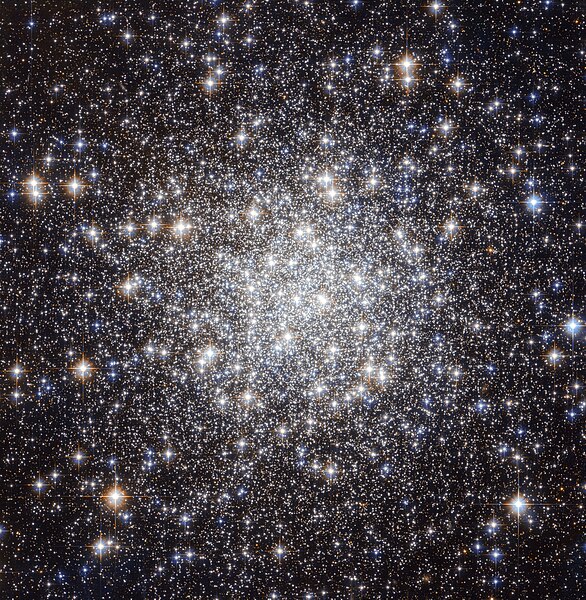Vega is the brightest star in the northern constellation of Lyra. It has the Bayer designation α Lyrae, which is Latinised to Alpha Lyrae and abbreviated Alpha Lyr or α Lyr. This star is relatively close at only 25 light-years from the Sun, and one of the most luminous stars in the Sun's neighborhood. It is the fifth-brightest star in the night sky, and the second-brightest star in the northern celestial hemisphere, after Arcturus.
Vega is the brightest star in the constellation of Lyra.
Astrophoto of Vega
"On the night of July 16–17, 1850, Whipple and Bond made the first daguerreotype of a star (Vega)"
Size comparison of Vega (left) to the Sun (right)
Lyra is a small constellation. It is one of the 48 listed by the 2nd century astronomer Ptolemy, and is one of the modern 88 constellations recognized by the International Astronomical Union. Lyra was often represented on star maps as a vulture or an eagle carrying a lyre, and hence is sometimes referred to as Vultur Cadens or Aquila Cadens, respectively. Beginning at the north, Lyra is bordered by Draco, Hercules, Vulpecula, and Cygnus. Lyra is nearly overhead in temperate northern latitudes shortly after midnight at the start of summer. From the equator to about the 40th parallel south it is visible low in the northern sky during the same months.
The constellation Lyra as it can be seen by the naked eye.
The constellation Lyra, enhanced for color and contrast. Brightest five stars are labeled.
A long-exposure image of Lyra
Messier 56 is composed of a large number of stars, tightly bound to each other by gravity. In Lyra are the objects M56, M57, and Kuiper 90. M56 is a rather loose globular cluster at a distance of approximately 32,900 light-years, with a diameter of about 85 light-years. Its apparent brightness is 8.3m.







